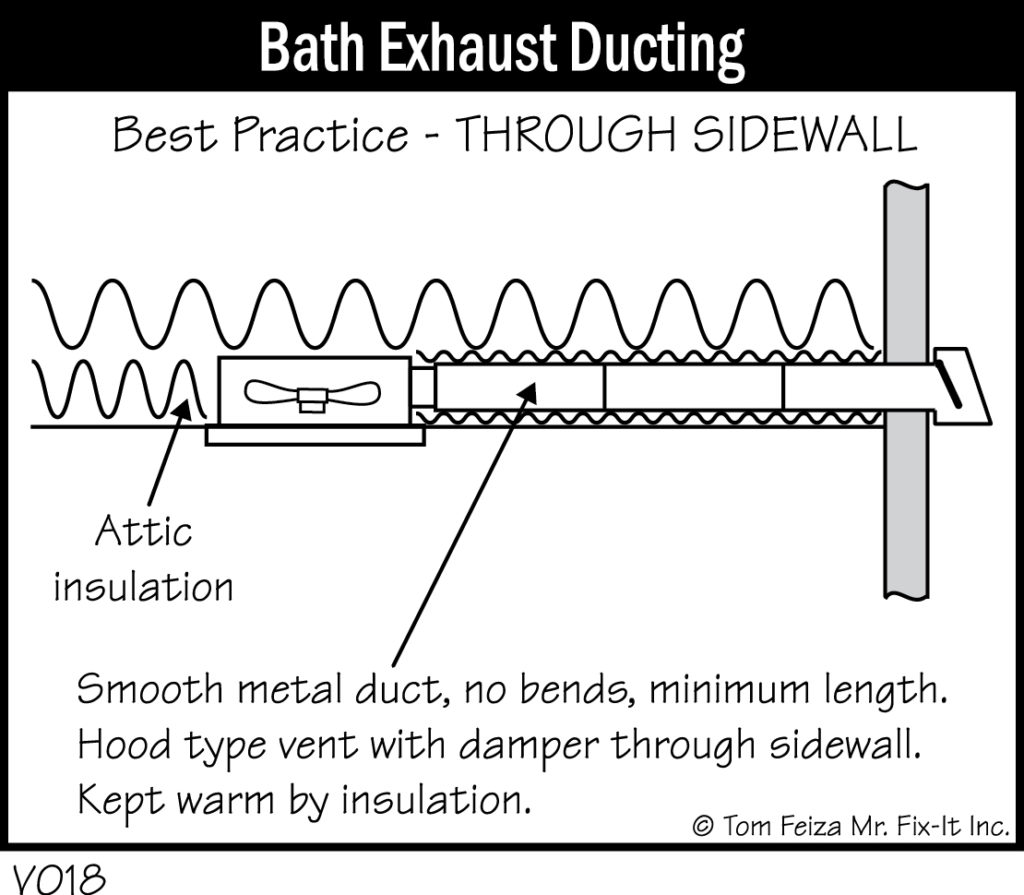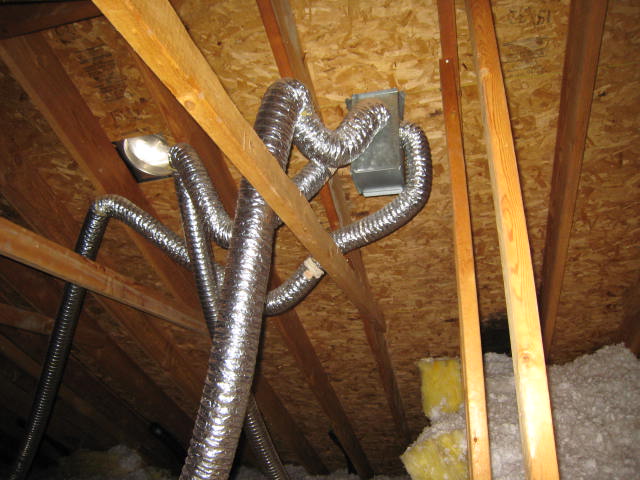By Tom Feiza, Mr. Fix-It, Inc., HowToOperateYourHome.com (htoyh.com)

Bath fans are essential to a properly functioning home. Fans capture excessive moisture and exhaust it to the outside. This helps prevent condensation and mold that can damage the home’s structure.
How should bathroom fans be ducted?
All bathroom fans should duct to the outside. Illustration V019 shows correct ducting through the attic and the roof. The duct runs are smooth and short, with limited bends. A large diameter (4- to 6-inch) duct allows better flow. The roof vent connector has a damper, and the duct is insulated to prevent condensation.

Illustration V018 shows a bath fan ducted through an attic sidewall. The vent connector has a damper, and the ductwork is insulated. A similar method would be used between the floors of a home.

Routing a bath exhaust into or through a soffit is questionable because moisture could be drawn back into the attic through the soffit vents.
What do we see in attics? A ductwork mess!
Bath exhaust ducting is rarely done correctly. Often it seems to be an afterthought during home construction. Many older homes have fans ducted directly into the attic, which always creates problems nowadays. It worked pre-1960 when we did not insulate and seal the building envelope, and attics were warm and leaky.
Dips and bends
Photo 1 shows a classic example of a dip purposefully placed in the exhaust duct. Old-time contractors thought this was a good way to trap air flow – and it is. But restricting air flow gives condensed moisture a good place to collect, drip and freeze, and that’s exactly the opposite of what should be happening.

Close but no cigar: fan must vent through the attic
Photo 2 shows a large-diameter flex duct vented near a roof vent. This should be a shorter run, and a vent connector that goes through the roof should directly connect to the flex duct.

Spaghetti
In Photo 3 we see a spaghetti-like view of numerous flex ducts with tight bends and restrictions. It appears three flex ducts are connected to some type of metal box through the roof. These duct runs are too long, and the sharp bends will restrict flow.

Amateur hour
An amateurish attempt to insulate two exhaust ducts appears in Photo 4. It would have been much easier to use an insulated duct. The two ducts are joined with a “T” at one roof vent connector, which is barely visible in this view. This “T” connector allows one fan to push air toward the other fan, and the vent connector is too small to handle the flow of two fans.

The takeaway
Inspect visible portions of a bath fan duct system, and confirm that the fans operate. The duct will be visible only in the attic, crawl space or basement ceiling. Duct runs should be short, with limited/gradual bends. The duct must exhaust outside the home. Rigid metal ducts are preferred; large 4- to 6-inch ducts are ideal. In cold climates, the duct should be insulated.
Tom Feiza has been a professional home inspector since 1992 and has a degree in engineering. Through HowToOperateYourHome.com (htoyh.com), he provides high-quality books and marketing materials that help professional home inspectors educate their customers. Copyright © 2021 by Tom Feiza, Mr. Fix-It, Inc. Reproduced with permission.

